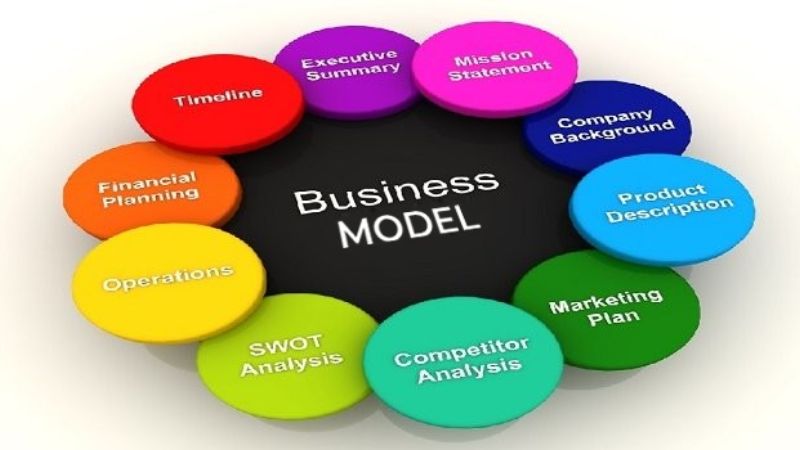A business model is the fundamental framework of a company, outlining how it creates, delivers, and captures value. Think of it as the blueprint for how a company operates, defining its core components and strategies to generate revenue and achieve its goals. A well-defined business model is critical for any organization, from a small startup to a multinational corporation, as it provides a clear roadmap for growth and sustainability.
Core Components of a Business Model
While business models vary widely across industries, they typically share several key components. Understanding these elements is essential to grasping how a business functions.
Value Proposition
The value proposition is the central promise a company makes to its customers. It answers the fundamental question: “What unique value do we provide that solves a customer’s problem or satisfies their need?” This can be anything from a superior product, a lower price point, exceptional customer service, or a unique brand experience. A strong value proposition is what differentiates a business from its competitors and convinces customers to choose its offerings.
Customer Segments
Every business targets specific customer segments, which are groups of people or organizations with shared needs, behaviors, or attributes. Defining these segments allows a company to tailor its products, marketing, and distribution channels to meet their specific requirements. For example, a luxury car manufacturer targets a different customer segment than an economy car company.
Channels
Channels refer to the various ways a company communicates with and reaches its customer segments to deliver its value proposition. These can include physical stores, e-commerce websites, mobile apps, social media, and third-party distributors. The choice of channels is crucial as it directly impacts a customer’s experience and the efficiency of product delivery.
Customer Relationships
Customer relationships describe the type of relationship a company establishes with its customer segments. This can range from highly personalized, one-on-one assistance (like a personal banker) to automated self-service (like an online shopping cart). The nature of these relationships influences customer loyalty and long-term engagement.
Revenue Streams
Revenue streams are the different ways a company earns money from its customer segments. Common examples include sales of physical products, subscription fees, licensing, advertising revenue, and service fees. A business may have one or multiple revenue streams, and diversifying them can create a more stable financial foundation.
Key Activities
Key activities are the most important actions a company must perform to deliver its value proposition. For a software company, this might involve software development and maintenance. For a manufacturing business, it would be production and supply chain management. These activities are the operational backbone of the business model.
Key Resources
Key resources are the assets required to make the business model work. These can be physical (e.g., machinery, buildings), intellectual (e.g., patents, brand), human (e.g., skilled employees), or financial (e.g., cash, credit lines). Identifying and managing these resources is vital for operational efficiency.
Key Partnerships
Key partnerships are the network of suppliers and partners that a business collaborates with to optimize its operations and reduce risks. These can include strategic alliances with other companies, joint ventures, or buyer-supplier relationships. Partnerships can provide access to new resources, markets, and expertise.
Cost Structure
The cost structure outlines all the expenses a business incurs to operate its model. This can include fixed costs (e.g., rent, salaries) and variable costs (e.g., raw materials, marketing expenses). A company’s cost structure is heavily influenced by its business model; a low-cost airline, for example, will have a very different cost structure than a premium, full-service airline.
Types of Business Models
There are many different types of business models, each with its own unique approach to generating revenue and creating value. Here are a few prominent examples:
E-commerce Model
The e-commerce model involves selling products or services online. This can be a B2C (business-to-consumer) model like Amazon, a B2B (business-to-business) model like Alibaba, or a C2C (consumer-to-consumer) model like eBay. The key advantage is global reach and lower operational costs compared to traditional brick-and-mortar stores.
Subscription Model
In the subscription model, customers pay a recurring fee (monthly or annually) to access a product or service. This model is popular in industries like streaming (Netflix), software (Adobe Creative Cloud), and magazines. It provides a predictable revenue stream and helps build long-term customer relationships.
Freemium Model
The freemium model offers a basic version of a product or service for free, with the option to upgrade to a premium, paid version with additional features. This is a common strategy for software and mobile apps like Spotify and LinkedIn. The free offering serves as a powerful marketing tool to attract a large user base, a portion of which will convert to paying customers.
Marketplace Model
A marketplace model connects buyers and sellers on a single platform and earns revenue by charging a commission on transactions, listing fees, or advertising. Companies like Uber (connecting riders and drivers) and Airbnb (connecting hosts and guests) are prime examples. The platform itself doesn’t own the products or services being sold, but facilitates the exchange.
Direct-to-Consumer (DTC) Model
The DTC model involves a company selling its products directly to the end consumer, bypassing traditional retail channels and middlemen. Brands like Casper (mattresses) and Warby Parker (eyewear) have successfully used this model to gain greater control over their brand, customer experience, and pricing.
The Importance of a Business Model
A robust business model is more than just a theoretical exercise; it’s a vital tool for strategic planning and execution. It serves several key purposes:
- Clarity and Alignment: It provides a clear, shared understanding of the business strategy among all stakeholders, from employees to investors. This alignment ensures everyone is working towards the same goals.
- Strategic Decision-Making: A well-defined model helps leaders make informed decisions about resource allocation, partnerships, and market entry. It acts as a guide for what the company should and should not do.
- Investor Confidence: Investors and lenders use a company’s business model to evaluate its potential for growth and profitability. A compelling and viable model can attract funding and support.
- Innovation and Adaptation: In a rapidly changing market, a business model must be flexible. The core components can be re-evaluated and adjusted to adapt to new technologies, consumer behaviors, and competitive pressures.
FAQs about Business Models
What is the difference between a business model and a business plan?
A business model is the conceptual framework for how a company creates and captures value. A business plan is a detailed document that outlines the company’s goals, strategies, and financial projections for a specific period. The business model is a core component of the business plan.
Can a company have more than one business model?
Yes, a company can operate with multiple business models, especially if it has diverse product lines or targets different customer segments. For example, a company might sell products directly to consumers while also licensing its technology to other businesses.
Why is a business model important for a startup?
For a startup, a clear business model is essential for securing funding, attracting talent, and guiding initial operations. It proves to potential investors that the founders have a well-thought-out plan for achieving profitability and scaling the business.
How often should a business model be reviewed?
A business model should be reviewed and potentially refined regularly, especially in dynamic industries. Market changes, technological advancements, and new competitors can all necessitate adjustments to ensure the model remains viable and competitive.
Final Thoughts
In today’s competitive landscape, a well-thought-out business model is the bedrock of a successful enterprise. It is the story of how a company will succeed, told through its value proposition, revenue streams, and operational structure. By continuously evaluating and adapting this blueprint, businesses can build sustainable growth and create lasting value for their customers and stakeholders.



